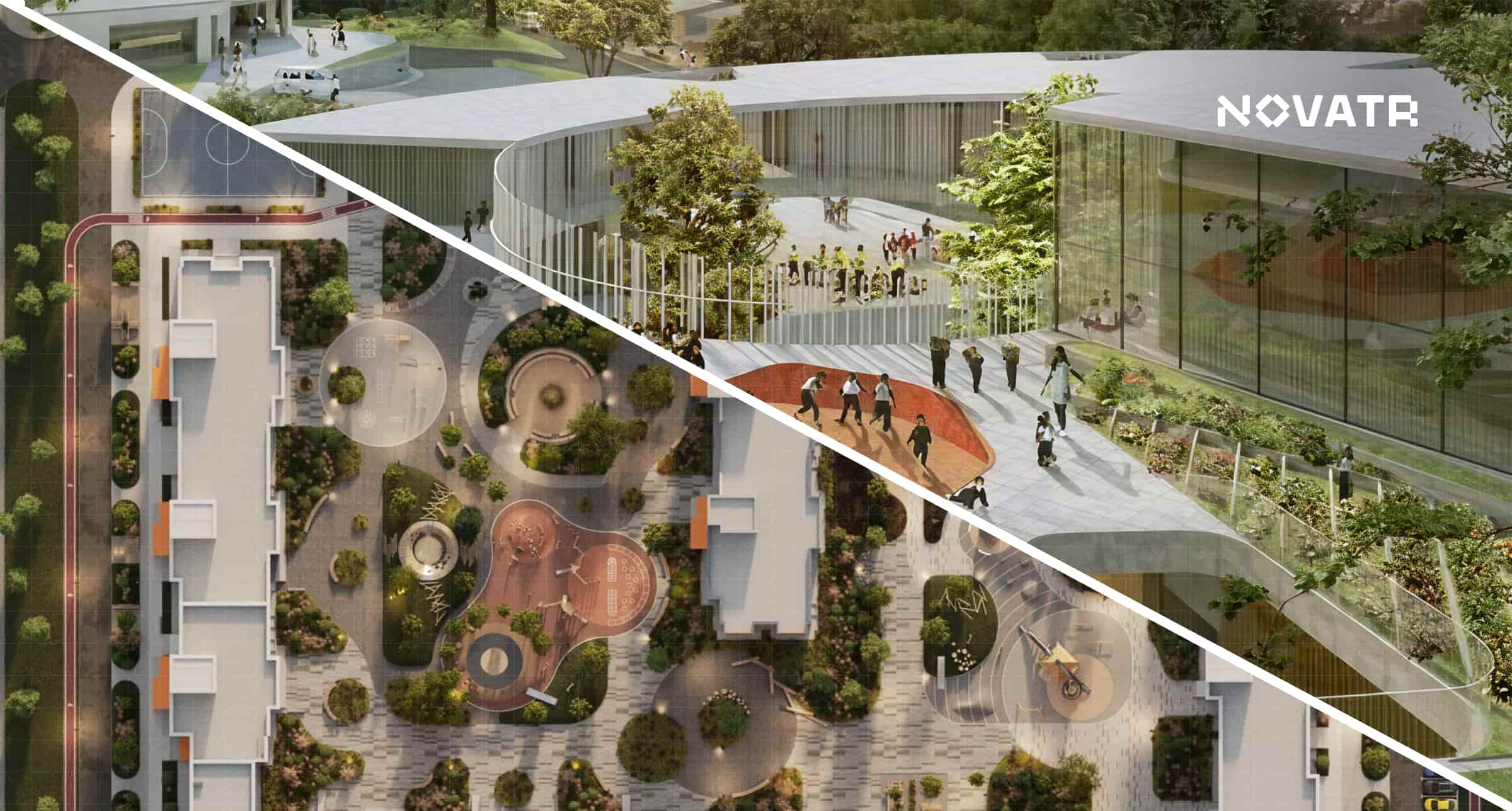
When people talk about outdoor planning and green space development, landscape design vs landscape architecture is often compared. While landscape designers often focus on aesthetics and residential projects, landscape architects typically handle larger, more technical public and commercial spaces. The U.S. Bureau of Labor Statistics (BLS) estimates that the number of landscape architects will grow by 4% from 2023 to 2033.
The median total pay for landscape architects in the U.S. is approximately $99,110 per year, while landscape designer roles earn a median annual pay of about $70,982 . Moreover, the landscaping industry in the U.S. brought in over $128 billion in 2023, which is a sure sign that these professions are very in demand.
Even though both landscape architects and landscape designers work to make outdoor spaces better, their roles, education, licensing, and jobs are different. Knowing these differences allows students to pick the right job and helps clients match with the right expert for their work.
In this guide, we explore what landscape design and landscape architecture are, how they vary in goals and clients, the tools used, careers, potential earnings, and which one could be better for you.
What is Landscape Design?

Landscape design focuses on placing plants, water features, lights, and structures outside to make beautiful, practical areas. The main concern is the look of the space, gardening, and whether it is useful.
Landscape designers are commonly involved in designing for homes and small offices. They rely on software to make both 2D and 3D designs of gardens, patios, and courtyards. Usually, professionals in this field have a certificate or associate degree and do not need to be licensed by the state to work. There are landscape design roles in design firms, construction companies, or as freelance work, so you have many options for your career.
What do landscape designers do?
-
Plan the designs of gardens and outside areas.
-
Pick the plants you want and organize the hardscaping.
-
Work together with clients to incorporate their wishes.
-
Use computer programs to show your design ideas.
-
Put together a plan for watering and lighting.
-
Keep you informed about plant care, the climate, and sustainability.
What Tools do landscape designers use?
-
Landscape design software (SketchUp, AutoCAD, Vectorworks)
-
Measuring tools, plant guides, and lighting simulations
-
Digital drawing tablets for renderings
-
Site analysis tools like soil testers and GPS
Because of advanced landscape design software, these experts can present their ideas to clients in a way that helps them see the finished result clearly. Most designers are artists who also have extensive knowledge of gardening, eco-friendly ideas, and organizing space.
Landscape design careers tend to have fewer rules, which makes it easier to get accepted. Still, designers who do well tend to get recognized by showing their work and getting positive recommendations. Since landscaping services are in great demand, the industry provides numerous ways to grow and focus on your career.
Also Read: Top 10 BIM Online Certification Courses in the USA for Architects & Civil Engineers
What is Landscape Architecture?

Landscape architecture involves the planning, design, and management of large outdoor areas, often for public use. This includes parks, campuses, urban plazas, green infrastructure, and environmental restoration projects.
To become a landscape architect, one must earn a degree from an accredited program, complete an internship, and pass the Landscape Architect Registration Examination (LARE). This is a licensed and regulated profession in most regions.
What does a landscape architect do?
-
Design public parks, transportation corridors, and campuses.
-
Address environmental challenges like drainage and erosion.
-
Collaborate with engineers, urban planners, and contractors.
-
Use landscape architecture software to develop complex plans.
-
Evaluate ecological impact and sustainability metrics.
-
Conduct environmental assessments and land-use studies.
Landscape architecture projects are often large in scale and require deep technical expertise, including grading, drainage, stormwater management, and ADA compliance. These professionals must understand local regulations, zoning laws, and environmental codes.
A landscape architecture career often begins with internships or entry-level positions in architecture firms or government agencies. Over time, professionals may move into senior design roles, project management, or urban planning. Landscape architecture jobs are both creative and technical, blending science with design to improve the quality of life for communities.
Additionally, landscape architects often participate in multidisciplinary teams that include architects, civil engineers, and environmental scientists. Their role can significantly influence urban ecosystems and resilience against climate change. As such, this career is deeply rooted in both science and policy.
Landscape Design vs Landscape Architecture
|
Criteria |
Landscape Design |
Landscape Architecture |
|
Project Scale & Complexity |
Smaller, residential, and light commercial projects |
Larger, public, and complex urban/environmental projects |
|
Educational Requirements |
Certificate, associate, or bachelor’s degree (not mandatory) |
Bachelor’s or master’s degree from an accredited university required |
|
Licensing |
No licensing required in most regions |
Mandatory licensure (LARE exam + internship) |
|
Typical Clients |
Homeowners, small business owners |
Government bodies, developers, institutions |
|
Project Goals |
Aesthetics, comfort, and functionality |
Environmental impact, urban planning, sustainability |
|
Software Tools Used |
Landscape design software (Realtime Landscaping, SketchUp) |
Landscape architecture software (AutoCAD, Rhino, GIS, Civil 3D) |
|
Career Growth |
Entry-level and freelance opportunities |
Steady employment in firms or government agencies |
|
Landscape Architecture Career |
Limited to design-focused roles |
Expansive, includes planning, restoration, and research roles |
|
Job Titles |
Landscape Designer, Garden Designer |
Landscape Architect, Urban Planner, Environmental Consultant |
|
Landscape Design Career |
Flexible, creative career with lower barriers to entry |
Regulated, technical profession with higher responsibilities |
|
Project Types |
Garden, patio, backyard, rooftop |
Parks, urban renewal zones, wetlands, and campuses |
|
Salary Trends |
Average landscape designer salary: $70,980 |
Average landscape architect salary: $99,110 |
|
Common Industries |
Residential landscaping services, design studios |
Government, architecture firms, and urban planning consultancies |
Conclusion
Both landscape design and landscape architecture offer unique pathways to improve outdoor environments, but they cater to different needs and project types. If you enjoy conceptualizing gardens, patios, and small outdoor spaces and prefer working one-on-one with residential clients, landscape design may suit your creative instincts. It allows you to experiment with textures, colors, and plant arrangements to bring outdoor spaces to life, without the constraints of licensing or regulatory codes.
Whether you're looking into landscape architecture projects that transform cityscapes or planning a detailed landscape design project for a home, both careers offer fulfilling, well-compensated roles in a growing industry. Each field is supported by powerful software tools, strong job growth, and increasing global focus on outdoor wellness, biodiversity, and climate resilience.
Explore the Building Information Modeling Course for Architects by Novatr and join the next wave of sustainable designers, planners, and creators reshaping our world.
Visit our resource page to explore more resources and expert guidance on advancing your career.
FAQs
1. What are the 5 basic elements of landscape design?
The five basic elements are:
- Line (paths, edges)
- Form (shapes, structures)
- Color (plants, materials)
- Texture (leaf surface, hardscape materials)
- Scale (proportion between elements)
These principles help guide visual composition and functional flow in every landscape design project.
2. What is the first rule of landscaping?
The first rule is to plan with purpose. Understand the client’s needs, site conditions, and environmental factors before starting the design. Effective planning ensures the final project meets aesthetic, practical, and environmental goals.
3. What education is required to become a landscape architect?
To become a licensed landscape architect, you need a bachelor’s or master’s degree in landscape architecture from an accredited institution and must pass the LARE (Landscape Architect Registration Examination). Internships and practical experience are also essential before entering the profession.
Was this content helpful to you



.jpg)




.png)

.png)
